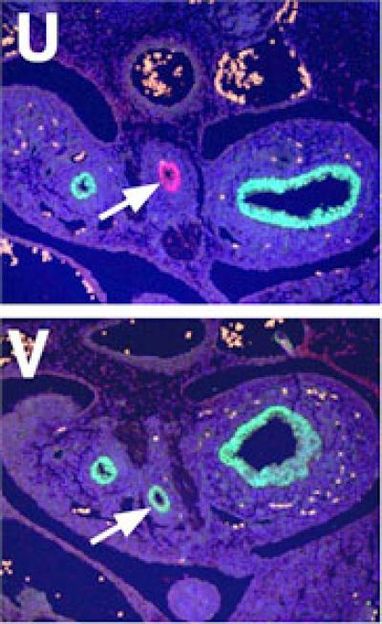Optogenetics: Light switch generates cellular second messenger
Light-sensitive protein from a fungus expands the optogenetic toolkit
As the research group under Prof. Alexander Gottschalk reports the protein CyclOp from the aquatic fungus Blastocladiella emersonii produces the second messenger cGMP when exposed to light. This important cellular signal is involved in vision, regulating blood pressure, induced cell death and also male erection. The compound Viagra, for example, leads to an increase in the cGMP level in the cells. If CyclOp is introduced to an organism like the nematode Caenorhabditis elegans, then one can specifically study cGMP-dependent signal pathways within the cell. This allows optogenetics to go a step beyond previous research.
"The light-activated enzyme CyclOp has outstanding molecular properties which qualify it as a valuable addition to the optogenetics toolbox for cell biologists and neurobiologists", explains Prof. Gottschalk from the Buchmann Institute for Molecular Life Sciences (BMLS) at Goethe University. His research group has introduced the protein into oxygen sensing cells in order to find out what role the second messenger cGMP plays in these cells. To do so, the translucent nematode is exposed to light leading to intracellular generation of cGMP. The cells respond by acting as if they had detected an increase in the oxygen level. In this way the researchers can use CyclOp to get a better understanding of how the natural signal for these cells is turned into a cellular response.
Original publication
Other news from the department science

Get the life science industry in your inbox
By submitting this form you agree that LUMITOS AG will send you the newsletter(s) selected above by email. Your data will not be passed on to third parties. Your data will be stored and processed in accordance with our data protection regulations. LUMITOS may contact you by email for the purpose of advertising or market and opinion surveys. You can revoke your consent at any time without giving reasons to LUMITOS AG, Ernst-Augustin-Str. 2, 12489 Berlin, Germany or by e-mail at revoke@lumitos.com with effect for the future. In addition, each email contains a link to unsubscribe from the corresponding newsletter.
Most read news
More news from our other portals
Last viewed contents
Muscle_weakness
Animal_Diversity_Web
Acrocyanosis

How to make a lung
Serotonergic_psychedelic
Akzo_Nobel
Coeliac_disease
Othera Files IND Application for OT-730 in Glaucoma - Novel Treatment Promises Improved Safety over Existing Therapies
Sanofi joins digital health focused innovation program Startup Creasphere
Essential_medicines






















































